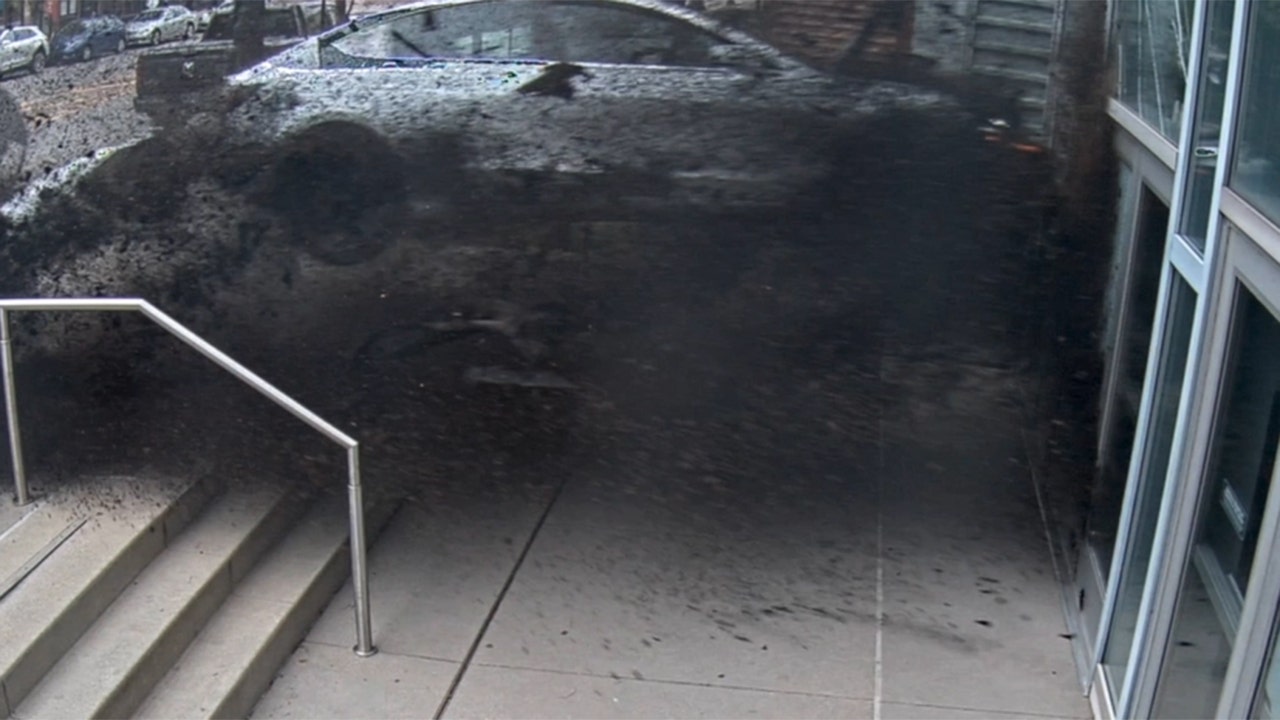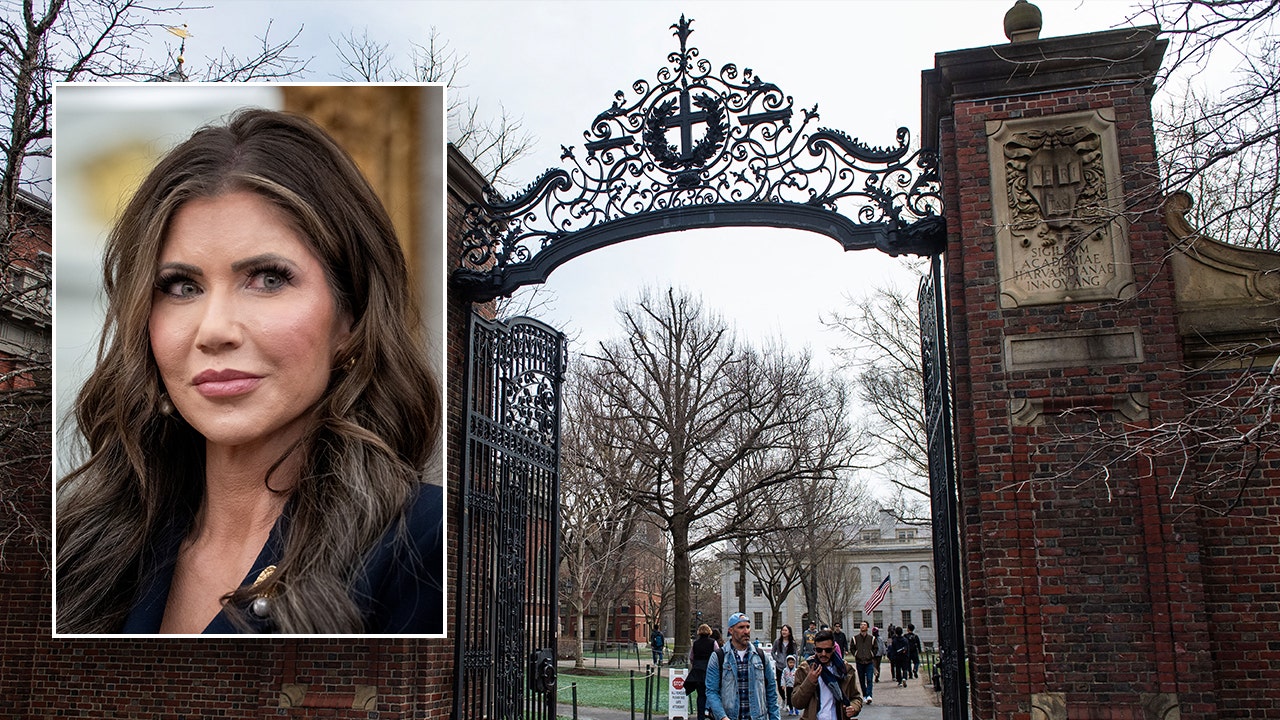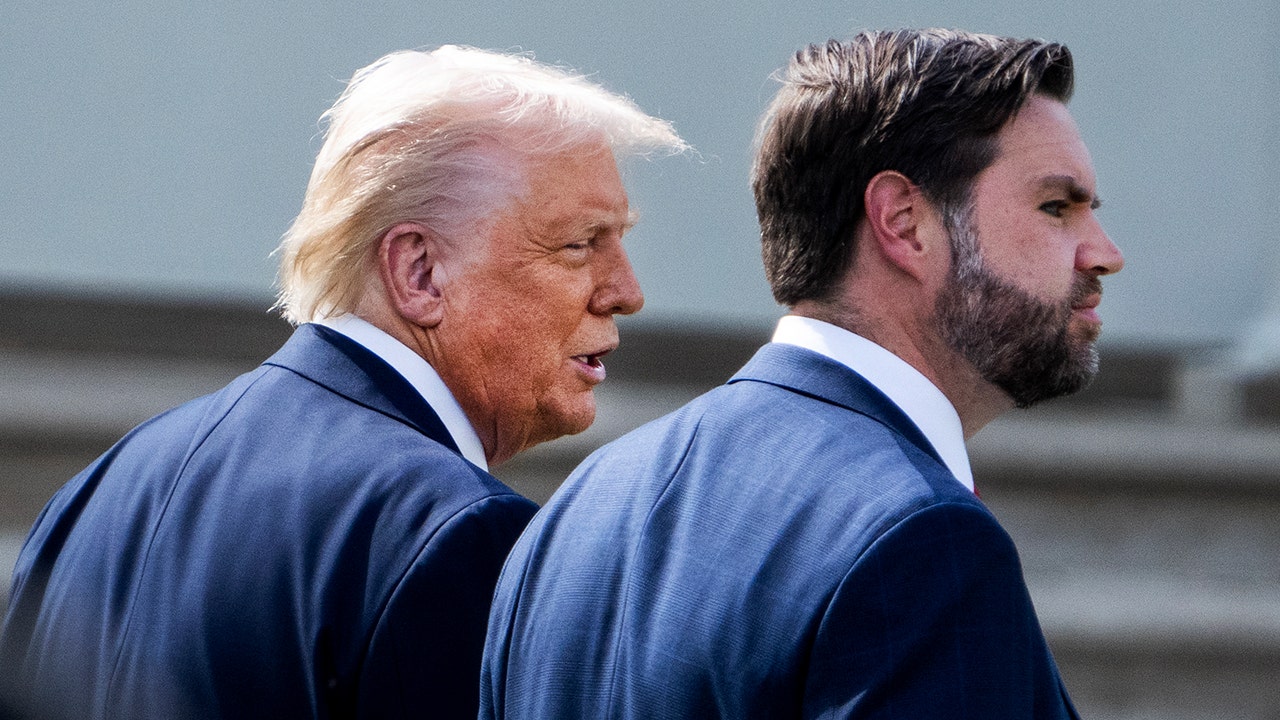Business
For Hollywood, AI is a threat. For these indie filmmakers, it’s a lifeline

Blazers brushed up against streetwear. Miniature cameras dangled from a woman’s earrings. One man’s hoodie read: “Rendered With Love.”
Envoys from two parallel planets, software and showbiz, mingled in the Cary Grant Theatre on Thursday evening as they waited for the show to begin. Some recalled tales from the Cannes Film Festival; others debated the merits of different artificial intelligence platforms and pontificated on the future of “wearable AI.”
They’d all gathered, several hundred of them, on the Sony Pictures lot for a film festival aimed at highlighting the nascent world of AI-assisted filmmaking. And though the mood in the venue was one of enthusiasm and curiosity, it came at a uniquely fraught moment for the two intertwined industries.
After all, it was only a handful of weeks ago that Hollywood screenwriters wrapped up a protracted strike that found them picketing outside Sony and other major studios in protest of, among other things, the threat AI posed to their livelihoods. The writers’ union ultimately secured a contract that included substantial regulations on the use of the tech to script shows and films, but their on-screen counterparts in the Screen Actors Guild remain on strike over automation anxieties of their own.
Yet at Emergent Properties, the Adobe-backed festival featuring six short films made with a grab-bag of AI modules and techniques, that discord was largely background noise.
Instead, the focus was on the doors that AI can open for independent filmmakers and hobbyists.
“Tonight you’re gonna hear a lot about AI,” said Mike Gioia — one of the event’s organizers and a co-founder of the AI workflow startup Pickaxe — during his introductory remarks. “But really, tonight is about people. It’s about the filmmakers. And for anybody who’s a filmmaker in L.A., the reality that you deal with is there are just so many hoops you have to jump through to get an idea out of your head, onto a screen.”
He continued: “In the best-case scenario, what AI does is it just makes [that] a lot simpler.”
Many of the participating filmmakers emphasized what artificial intelligence software means for smaller-time creatives — people whose passion projects generally exist outside the Hollywood ecosystem subject to the recent strikes.
A scene from French filmmaker Anna Apter’s “/Imagine,” screened during the Emergent Properties festival.
(Jay L. Clendenin / Los Angeles Times)
“I wanted to make something in my room and not have to wait two or three weeks for someone to say, ‘OK, let’s do this or that,’ ” said Anna Apter, a director who set AI-generated images of children’s birthday parties to a monologue about loneliness in her short film “/Imagine.”
Speaking from Paris before the event, which she wasn’t able to attend in person, she added: “I know how all these jobs can be threatened by AI. But I feel like it gives people who don’t have big budgets — we don’t have excuses anymore, you know? We can do anything.”
“The whole idea is … how can we take this traditional model and not be afraid of these AI tools, but instead figure out a strategic way to let them work with every artist involved,” said Quinn Halleck, who used AI throughout the development of “Sigma_001,” a short film that drew inspiration from the real-life story of a Google engineer who thought the company’s AI chatbot may have become sentient.
But not everyone is so optimistic about how these two sectors will butt up against each other as AI continues to develop. The last few months have seen Hollywood’s production pipeline grind to a halt amid dual strikes by the WGA screenwriters’ union and SAG-AFTRA, the actors’ union, both of which have expressed concerns that AI may put people out of work or neuter their creativity.
The WGA ultimately secured a contract that didn’t close the door on AI screenwriting but did say writers can’t be compelled to use the software and blocked studios from cutting union members out of the loop entirely. Actors — who remain on strike — have focused their concerns on the digital simulation of performances. The Alliance of Motion Picture and Television Producers, which represents the major Hollywood studios in labor negotiations, has maintained that actors will retain control over their likenesses.
Even the “Emergent Properties” film fest prompted some push-back.
In the lead-up to the event, Gioia, one of the organizers, posted an invitation to the showcase on a Reddit forum for Los Angeles filmmakers. The response, at least publicly, was overwhelmingly negative.
“I’m not trying to be a Luddite and realize AI is coming whether the industry as a whole wants it or not, but poor taste and poor timing,” reads the top comment.
Another highly ranked critic added: “Especially with the strikes going on you’re pretty out of line.”
In private messages, people were more supportive of the event, Gioia said, and many ended up coming to the festival. Nevertheless, he said, he gets why a lot of commenters were critical.
“For people who work in film for a paycheck doing skilled but non-creative labor (like rigging lights), it’s quite frightening and doesn’t have any upside,” he told The Times via text.
(Sony, a struck company, did not sponsor the event, Gioia said; the festival organizers merely rented the venue from the studio.)
The AI on display at Thursday’s event was largely used for special effects purposes, rather than to replace actors with digital doubles as SAG-AFTRA’s concerns have emphasized. Some of the filmmakers did use AI to write or develop their scripts, according to an event brochure, and a few films featured AI-generated faces or voices.
Some event attendees admitted to feeling some hesitancy about the AI boom.

A scene from filmmakers Caleb Ward and Aminah Folli’s “Zebulon Five.” Ward runs the AI storytelling community Curious Refuge with his wife, Shelby.
(Jay L. Clendenin / Los Angeles Times)
Shelby Ward, the co-founder of Curious Refuge — an online community for AI storytellers that helped make one of the evening’s entrants, a nature “documentary” about an alien planet — asked the audience during a post-screening question-and-answer session how many people had messed around with AI. Many raised their hands.
She followed up: “I’m curious as well: who is kind of nervous about these tools? Anyone kind of anxious, a little overwhelmed?”
A smattering of hands went up — fewer than before, but not none.
“I would say I fall into that — I did,” Ward said. “I kind of went through a few months of, like, my paradigm was shifting.” But putting in the time to explore it, she continued, will ultimately make people more comfortable with the software.
The participating filmmakers cautioned that this technology still has its limits. Keeping characters’ appearances consistent between shots is tough, they said; eyeballs continue to flummox the software.
“Right now, it’s impossible for it to tell a good story,” said Paul Trillo, another filmmaker. He continued, to applause: “I think that’s up to people to do.”
(Trillo’s screening for the night was a music video filmed in the Louvre that used AI effects to distort and disfigure classic works of art. The conceit, he told The Times beforehand, is “a little tongue in cheek.”)
Nevertheless, the filmmakers emphasized, AI technology is rapidly improving. Several talked about having to go back and redo parts of their films during production because a newer, better tool had come out midway through the process.
In the world of AI filmmaking, Trillo said, “‘impossible’ is a very temporary term.”

Business
Video: Fed Chair Says Trump Tariffs Could Worsen Inflation

new video loaded: Fed Chair Says Trump Tariffs Could Worsen Inflation
transcript
transcript
Fed Chair Says Trump Tariffs Could Worsen Inflation
Jerome H. Powell, the chair of the Federal Reserve, stressed that the tariffs announced so far go well beyond what the Fed had expected even in its worst-case scenario.
-
The level of tariff increases announced so far is significantly larger than anticipated, and the same is likely to be true of the economic effects, which will include higher inflation and slower growth. We may find ourselves in the challenging scenario in which our dual mandate goals are in tension. If that were to occur, we would consider how far the economy is from each goal and the potentially different time horizons over which those respective gaps would be anticipated to close. These are very fundamental changes in — long-held in some cases — policies in the United States, and there’s not any real experience. I mean, the Smoot-Hawley tariffs were actually not this large and they were 95 years ago. So there isn’t a modern experience of how to think about this. And businesses and households are saying in surveys that they are experiencing incredibly high uncertainty. I mean, your question really is what if the uncertainty remains high? I think that’s a difficult environment. If the United States were to become a jurisdiction where risks are just structurally higher going forward, that would make us less attractive as a jurisdiction. We don’t know that at this point. But I think that would be the effect.
Recent episodes in Business
Business
Commentary: Trump's Kafkaesque attack on Social Security–Declaring living people as dead

In so many ways the Trump administration has given us a window into a dystopian world — flouting a unanimous decision by the Supreme Court, elevating scientific myth into healthcare policy and so on. But its latest attack on the Social Security system is arguably the most frightening of all.
Reportedly pressured by Elon Musk’s DOGE team and by Secretary of Homeland Security Kristi Noem, the current stewards of Social Security have allowed the government to declare 6,300 people “dead” in a crucial Social Security database, even though they’re very much alive.
The initial reports of this action were reported by the New York Times and Washington Post, but it was confirmed for me, if somewhat obliquely, by a White House spokeswoman.
You’d have a hard time explaining this to someone in a way that doesn’t seem dystopian.
— Devin O’Connor, Center on Budget and Policy Priorities
“President Trump promised mass deportations and by removing the monetary incentive for illegal aliens to come and stay, we will encourage them to self-deport,” the spokeswoman, Elizabeth Huston, told me by email.
The White House claims that “DHS identified over 6,300 temporarily paroled aliens on the terrorist watch list or with FBI criminal records,” and as of April 8 “terminated” their right to hold Social Security numbers or receive benefits.
“To prevent them from receiving any payments,” the White House told me, the Social Security Administration moved their numbers into what the White House calls the “Ineligible Master File.”
What’s that? It’s what is officially known as Social Security’s “Death Master File,” the database of deceased number holders.
Make no mistake: In effect, these 6,300 living, breathing individuals have been declared “dead” by Trump administration fiat.
“You’d have a hard time explaining this to someone in a way that doesn’t seem dystopian,” says Devin O’Connor, an expert on Social Security at the Center on Budget and Policy Priorities.
Social Security advocates are aghast. “As with most of the actions of the Social Security Administration since Trump came into office, we cannot make rational sense of the policy to place immigrants on the SSA’s list of deceased persons,” says Max Richtman, chief executive of the National Committee to Preserve Social Security and Medicare.
“These are people who are in the United States legally and need active Social Security numbers in order to work and transact personal business,” Richtman says. “By placing them on the list of dead persons, the Trump administration is needlessly preventing them from utilizing their Social Security numbers for legitimate reasons.”
Before we delve further into the consequences of this action — for the newly “dead,” for all Social Security beneficiaries and indeed American citizens, and for the Social Security system itself — a few words on how this came about.
It started on inauguration day, when Trump abruptly terminated four Biden administration humanitarian programs granting legal U.S. residence to applicants from Cuba, Haiti, Nicaragua and Venezuela seeking asylum. By the end of Biden’s term, more than 500,000 applicants had been granted so-called parole via the programs known collectively as CHNV. Typically, they feared political violence or death in their home countries.
After passing national security and public safety scrutiny and showing that they had a U.S. sponsor to provide housing and other support, they were granted a “parole” of up to two years permitting them to work legally, which required them to obtain Social Security numbers and to contribute payroll tax to the program. During that period, they could seek more permanent permission to stay in the country. As of April 8, they lost those rights and obligations.
The White House hasn’t specified what evidence it has that the 6,300 immigrants declared “dead” were members of terrorist groups or FBI-designated criminals.
As it happens, the termination order was blocked Monday by federal Judge Indira Talwani of Boston. In a 41-page order, Talwani raised the question of whether Congress had given Trump the authority, “after parole has been granted and individuals have entered the country on a lawful basis,” to revoke the grants of parole “en masse.” She wrote: “The answer is no.” The revocation, she ruled, would have to be on a case-by-case basis, just as their paroles had been granted.
Meanwhile, Tuesday in Baltimore, federal Judge Ellen Lipton Hollander convened a hearing over whether the Social Security Administration has complied with her earlier order to keep DOGE employees’ hands off the agency’s records — an issue on which the unilateral “death” designations may well be relevant. Hollander had ordered acting Commissioner Leland Dudek to appear for testimony, but the government has refused to allow him to appear.
That brings us back to the Death Master File. (The administration has said it should be referred to now as the “Ineligible Master File,” but its authority to change its official designation isn’t clear, and in any case this looks merely like an attempt to obscure the nature of the file itself.)
The DMF is one of the most important and closely supervised databases in the Social Security Administration’s possession. Currently it contains more than 141 million names of deceased workers, along with their Social Security numbers and their dates of birth and death. The program uses the information, according to former Social Security official Tiffany Flick, for the purpose of “discontinuing benefits payments to deceased individuals, confirming an individual’s right to survivor benefits, and identifying fraud” carried out by users of dead persons’ Social Security numbers.
The information is carefully vetted unless it comes from family members, a state agency or a funeral home, Flick said in a court declaration. The agency takes pains to verify reports from anyone else. Of the 2.9 million death reports received each year, Flick said, fewer than one-third of 1% typically have to be corrected.
Federal law requires the agency to keep the full database confidential. A redacted version, however, is marketed via the Department of Commerce to banks, credit agencies and other financial institutions — but only if they can pass an annual certification in which they have to show they can protect the data from illicit use. The limited version contains only information that is more than three years old.
There can be no question that “intentionally marking people who are still living as dead” in the master file “is unheard of and improper,” Flick stated.
Beyond that, “when Social Security incorrectly declares someone dead, it ruins their lives,” observes Nancy Altman, president of the advocacy organization Social Security Works.
In 2023, Altman notes, “a Maryland woman was wrongly declared dead and found her health insurance and Social Security benefits terminated, her home listed for sale, her credit cards canceled, and her water shut off. Her health deteriorated as she spent endless hours trying to undo the mistake. Indeed, she did actually die seven months later.”
Because the DMF is viewed as authoritative by financial services companies, adds O’Connor, its misuse can cause “disruption in your bank account access, your credit cards canceled, your pension benefits being cut off, your insurance coverage canceled or an insurance claim denied. If you apply for a job your application could be rejected, or have a denial of credit.”
The very idea that government bureaucrats can designate living persons as dead for reasons other than their actual death should send shudders through all Social Security participants, citizens and otherwise — especially given the manipulation of the program from Trump acolytes already and the absence of official oversight over DOGE’s rampaging minions.
“Now, if you’re included in the Death Master File even by accident, how do you show not only that you’re not dead, but that you don’t belong on the file for some other unknown, mysterious reason?” O’Connor asks. “It’s creating the potential for some Kafkaesque bureaucratic nightmares every time they make a mistake — and there will be mistakes.”
As for the administration’s contention that the 6,300 “dead” people are on a terrorism watch list or FBI list, the administration’s treatment of facts and statistics when it comes to immigrants or Social Security does not inspire confidence.
The administration, for instance, has consistently described Kilmar Abrego Garcia, whom it admits to having transported to El Salvador illegally, as an “illegal alien” and a member of the criminal gang MS-13. But he was in the U.S. legally, and no valid evidence has been produced to show he’s a member of MS-13 — quite the contrary, he may be a victim of MS-13.
DOGE’s claims about Social Security data are almost risibly ignorant. Musk asserted that DOGE found millions of dead people as old as 150 receiving benefits, but he was misinterpreting a software artifact.
The manipulation of the Death Master File itself has obliterated its validity as a data source for financial and commercial institutions. If those institutions can no longer trust what was once the gold standard for information about their present or future customers, how can it be used at all?
What’s scariest about the cavalier manipulation of the Death Master File is that Trump’s refusal to observe bureaucratic norms, statutory limitations, and even to respond to court orders, points to the question of how far he’s willing to go. Designating living persons as dead could be only the beginning.
“If they can do this to somebody,” O’Connor says, “they can do it to anybody.”
Business
How Much Are Tariffs on Chinese Goods? It’s Trickier Than You Think.

The escalating trade war between the United States and China has created deep uncertainty for U.S. companies that rely on Chinese suppliers. Retaliations in recent days by the two countries have resulted in huge average tax rates on each other’s imports, with tariffs often costing more than the price of the goods themselves.
But because of an ever-changing patchwork of trade rules, not every product will be charged an astronomical tariff, trade lawyers, customs brokers and importers say. In some cases, tariffs will pile on other tariffs. In other instances, they can reduce costs, while other times they can cancel out new ones.
The new 125 percent rate that President Trump imposed will in many cases be added on top of long-existing duties. There are four main categories of tariffs that are imposed on goods from China.
A standard tax applied to imports from the world. The rate depends on the goods. Most rates are very low.
Taxes introduced during the first Trump administration and expanded by former President Joseph R. Biden as a way to protect U.S. industries.
Trump imposed a 25% tariff on these imports worldwide.
-
+25%
On steel and some products that contain steel.
-
+25%
On aluminum and some products that contain aluminum.
-
+25%
On cars and car parts.
Trump imposed and raised tariffs on Chinese goods multiple times this year.
-
+20%
On most goods as a punishment for the flow of fentanyl into the United States.
-
+125%
On most goods in an effort to reset the trade balance between the two countries.
Rates ultimately depend on what is imported, what materials are used (from where), which special rates are applied and what sorts of products are exempt.
New tariff rates on select goods from China
Understanding which tariffs will apply and which ones won’t will ultimately determine what businesses choose to buy, how they’ll factor in the new costs — if they can even afford them — and what they may ultimately pass on to their customers.
“Companies are scrambling to mitigate their tariff exposure, particularly those with supply chains involving China,” said Richard A. Mojica, a customs lawyer at Miller & Chevalier. “But there are only a few levers they can pull.”
Here is how the import duties on certain goods from China add up:
-
0%
Base tariff
-
20%
Fentanyl” tariff
The United States imported nearly $52 billion worth of smartphones in 2024 — more than 80 percent of it from China. Smartphones from the country were originally subject to a duty of up to 145 percent, but customs guidance issued late Friday exempted laptops and smartphones from the 125 percent reciprocal tariff on most Chinese goods. The devices are still subject to new import taxes introduced earlier this year.
-
0%
Base tariff
-
100%
Pre-2025 extra tariff
-
20%
Fentanyl” tariff
-
125%
Reciprocal” tariff
Syringes and needles are charged some of the highest tariff rates. These items are among the Chinese goods targeted initially by the first Trump administration and then subject to increases under Mr. Biden. His administration levied a 100 percent tariff on syringes and needles last September as a part of an effort to protect American factories and show a tough-on-China stance.
These types of tariffs on Chinese goods can range from 7.5 percent up to 100 percent and apply to clothing, solar panels, electric vehicles and other goods that China has been accused of selling at far lower prices than many American businesses do.
With this week’s tariffs included, American importers will now have to pay a 245 percent tariff — or roughly 2½ times the cost of the product itself.
-
0%
Base tariff
-
20%
Fentanyl” tariff
-
125%
Reciprocal” tariff
Over three-quarters of toys imported into the United States come from China, making it America’s biggest supplier. Previously, things like tricycles, stuffed animals, dolls and puzzles could enter the country duty free. Now, all these items are charged a 145 percent import tax. Retail prices for these items are expected to rise significantly.
-
16%
Base tariff
-
7.5%
Pre-2025 extra tariff
-
20%
Fentanyl” tariff
-
125%
Reciprocal” tariff
Many goods have a category-specific tariff that applies regardless of the country of origin. For wool sweaters, that is 16 percent. They are also on the list of goods subject to an additional tariff introduced during Mr. Trump’s first term. For the $170 million worth of wool sweaters that came into the United States from China last year, the tariff rate was roughly 24 percent — which at the time was considered relatively high.
Now, with tariffs from February intended to punish China over the flow of fentanyl into the United States and with this week’s “reciprocal” round, the import tax for sweaters has significantly jumped.
-
0%
Base tariff
-
25%
Pre-2025 extra tariff
-
25%
Aluminium, steel tariff
-
20%
Fentanyl” tariff
Before Mr. Trump imposed a 25 percent tariff on all foreign steel and aluminum parts in March, there was already a levy on some Chinese metal imports — all part of a protectionist effort to bolster domestic manufacturing. But Mr. Trump’s new tariffs significantly expanded what will be taxed: Not just steel beams or aluminum rods, but a wide range of products that contain aluminum and steel components.
While most U.S. imports of these metals are from other countries, including Canada, China supplies many products that have metal components.
Aluminum and steel products are exempted from this week’s “reciprocal” tariffs, which reduces the effective tax rate of Chinese steel and aluminum products to lower than that of many other goods.
-
2%
Base tariff
-
7.5%
Pre-2025 extra tariff
-
12.5%
Aluminium, steel tariff
-
25%
Cars, car parts
-
20%
Fentanyl” tariff
New tariffs of 25 percent also apply to all imported cars, and starting in May, car parts. Some car parts, like door hinges, fall under both the car parts tariff and the aluminum tariff. In this case, an importer would not only have to pay a duty on the value of the aluminum in the part, but also an additional tariff on the value of the entire product.
Because this item is subject to the aluminum and car parts tariffs, it is exempted from the China-specific reciprocal tariff.
On the other end of the cost spectrum are books. Ninety-three percent of the nearly $600 million in children’s books that the United States imports each year comes from China. Children’s books typically enter the United States duty free.
“Informational materials” are one of the very few classes of goods that are exempt from new tariffs on China this year.
Do you have a business that relies on Chinese suppliers? Tell us how the tariffs are affecting you.
The New York Times wants to talk to business owners about President Trump’s imposition of additional tariffs on imports from China. We’ll read each questionnaire response. We will not publish any part of your response without talking with you further. We will not share your contact information outside The Times newsroom, and we will use it only to contact you.
-

 Movie Reviews1 week ago
Movie Reviews1 week agoFilm Review: 'Warfare' is an Immersive and Intense Combat Experience – Awards Radar
-

 News1 week ago
News1 week ago3 Are Killed in Shooting Near Fredericksburg, Va., Authorities Say
-

 Health1 week ago
Health1 week agoAs RFK Jr. Champions Chronic Disease Prevention, Key Research Is Cut
-

 News1 week ago
News1 week agoBoris Johnson Has Run-In With Feisty Ostrich During Texas Trip
-

 World1 week ago
World1 week agoEPP boss Weber fells 'privileged' to be targeted by billboard campaign
-

 Technology1 week ago
Technology1 week agoMeta got caught gaming AI benchmarks
-

 World1 week ago
World1 week agoDR Congo repatriates three US citizens convicted over failed coup
-

 News1 week ago
News1 week agoTrump Asks Supreme Court to Let Him Fire Agencies’ Leaders


















